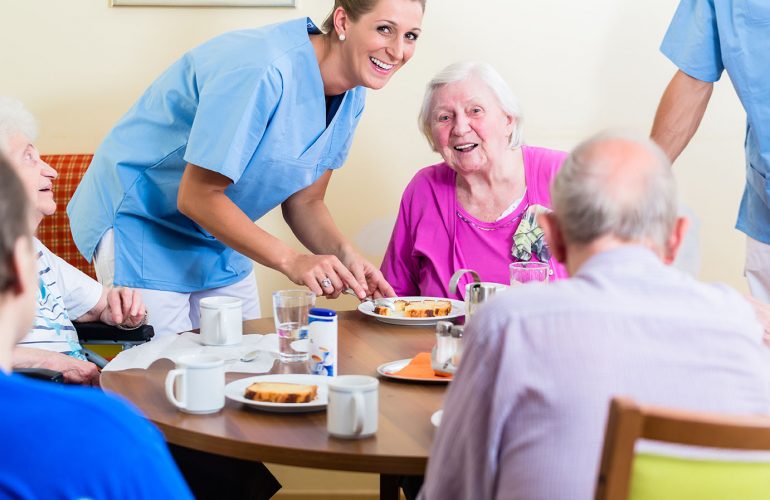A Common Problem
Unfortunately, loss of appetite and many associated negative outcomes is a common problem for many older adults. The National Institutes for Health (NIH) estimate that between 10% and 30% of older adults experience a decreased appetite. While there are numerous reasons for loss of appetite including side effects of certain medications, decreased energy, and various health conditions, it is important to help seniors improve their appetite and encourage them to maintain a healthy diet. I experienced this with my mother, who lived in a skilled nursing home the last couple years of her life. As her appetite diminished, so did her health and well-being.
Simple Ways to Improve Appetite
Everyone has their favorite foods and beverages. When seniors start pushing the plate to the side and become less interested in eating, take note of the food being rejected and try to replace it with something they love to eat. My mother began eating less and less from the tray being served by dietary. I sat many afternoon and evenings encouraging her to eat or sometimes picking up the fork and handing it to her, saying, “Come on mom. You have to eat” As long as I did this, she would eat better, but not significantly so. And then I decided to start bringing in her favorite foods at various times throughout the day or evening. At first she would tell me that she wasn’t hungry, and then she would eat, in entirety, whatever I brought for her. Giving her what she wanted to eat stimulated her diet and improved her nutritional status for quite a while.
(NOTE: Interested in Nursing CEUs? Checkout my Nursing CEUs on CEU Academy and try a FREE CEU today!)
Since my mother had some type of dementia, as the disease progressed, it became more and more difficult for her to eat full, traditional meals. When we made the foods simple, like finger foods, or those cut into smaller, bite-size pieces, she ate more because it was easier for her to navigate the plate and pick up what she wanted. She had dentures, so no dense, chewy, tougher foods would work. Softer foods or those that had some texture worked much better. French fries, grapes, pudding, popcorn, chips, broccoli, beans, and slider sandwiches made eating easier for her, and therefore, more enjoyable. While some foods were healthier than others, the point is she was getting nutrients into her body one way or another. The alternative was malnutrition, and I wasn’t having that!
In addition to providing favorite and simpler finger foods, try to change your mind-set about what is considered “healthy” concerning an older adult’s nutritional status. I learned many years ago about the “Liberalized Diet”, which essentially means at a certain age you should eat whatever you want to. All of the ingredients that make foods taste good, like salt, sugar and fat should be included in their diet, with the physician’s approval (or maybe not). If an 87 year old person wants to eat deep fried Snickers candy bars, let them. I say this somewhat humorously and seriously. These people have lived a long life and have beaten the odds in so many ways, I doubt that a deep fired Twinkie will be their undoing.
Final Thoughts on Helping Older Adults with Appetite Loss
As we age, we face many health-related challenges including a decreased desire for food. If this happens every now and then, there should be no need to panic. If a decreased appetite is chronic and ongoing, something may be wrong and will need to be addressed by the family and healthcare professionals. Before believing the worst, try some simple modifications to the person’s diet. Give them what they love to eat and make the portions small and easy to eat. If they want fat, sugar and salt, and their health condition supports it, let them have at it. After all, a little junk food is better than being malnourished.
(NOTE: Interested in Nursing CEUs? Checkout my Nursing CEUs on CEU Academy and try a FREE CEU today!)

